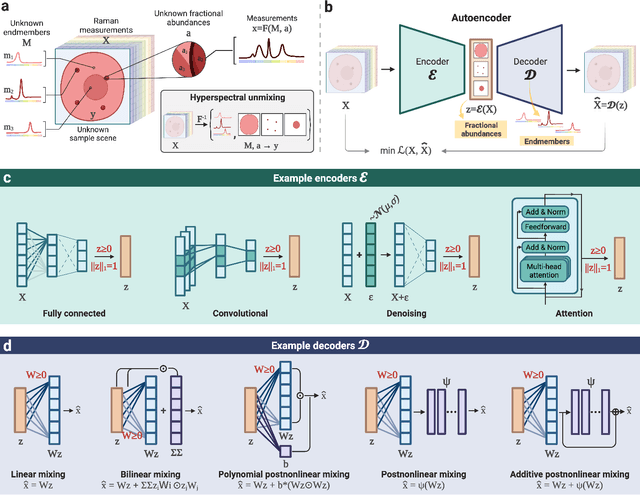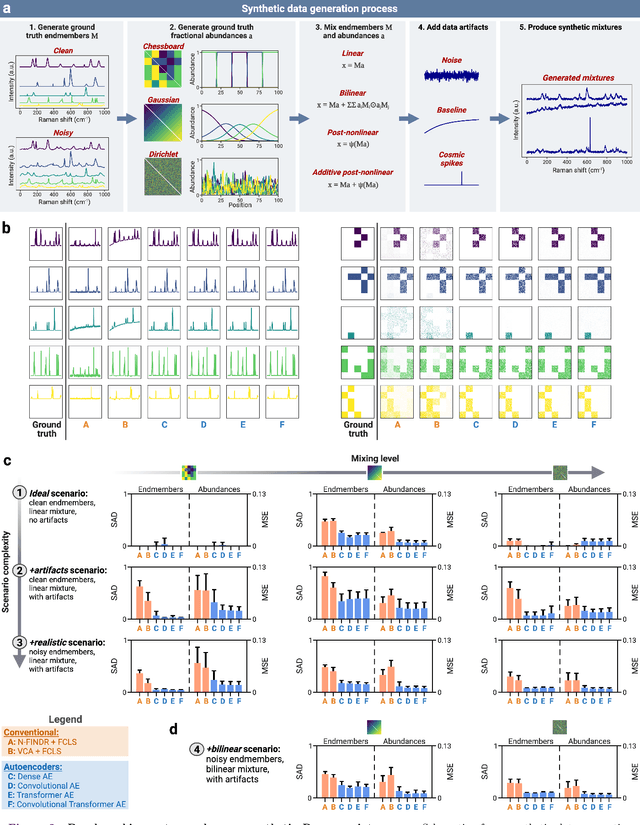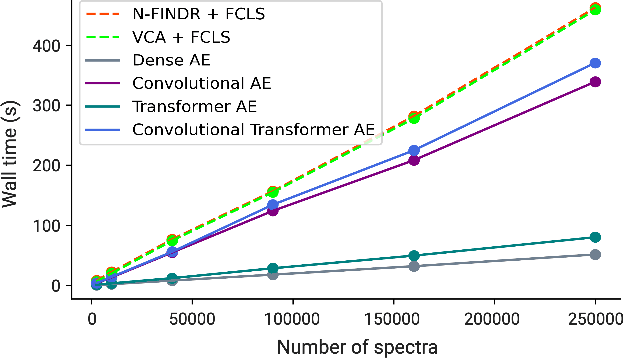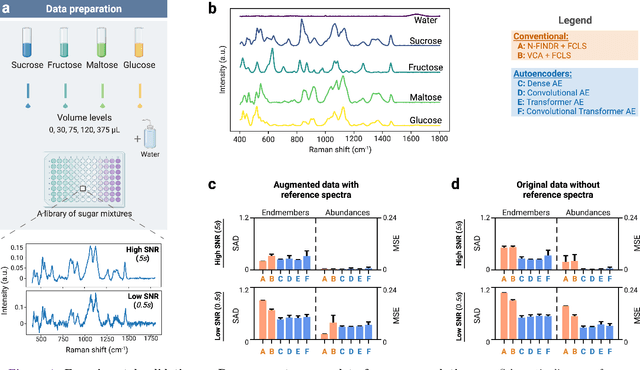Dimitar Georgiev
Hyperspectral unmixing for Raman spectroscopy via physics-constrained autoencoders
Mar 07, 2024



Abstract:Raman spectroscopy is widely used across scientific domains to characterize the chemical composition of samples in a non-destructive, label-free manner. Many applications entail the unmixing of signals from mixtures of molecular species to identify the individual components present and their proportions, yet conventional methods for chemometrics often struggle with complex mixture scenarios encountered in practice. Here, we develop hyperspectral unmixing algorithms based on autoencoder neural networks, and we systematically validate them using both synthetic and experimental benchmark datasets created in-house. Our results demonstrate that unmixing autoencoders provide improved accuracy, robustness and efficiency compared to standard unmixing methods. We also showcase the applicability of autoencoders to complex biological settings by showing improved biochemical characterization of volumetric Raman imaging data from a monocytic cell.
Accelerating Molecular Graph Neural Networks via Knowledge Distillation
Jun 26, 2023



Abstract:Recent advances in graph neural networks (GNNs) have allowed molecular simulations with accuracy on par with conventional gold-standard methods at a fraction of the computational cost. Nonetheless, as the field has been progressing to bigger and more complex architectures, state-of-the-art GNNs have become largely prohibitive for many large-scale applications. In this paper, we, for the first time, explore the utility of knowledge distillation (KD) for accelerating molecular GNNs. To this end, we devise KD strategies that facilitate the distillation of hidden representations in directional and equivariant GNNs and evaluate their performance on the regression task of energy and force prediction. We validate our protocols across different teacher-student configurations and demonstrate that they can boost the predictive accuracy of student models without altering their architecture. We also conduct comprehensive optimization of various components of our framework, and investigate the potential of data augmentation to further enhance performance. All in all, we manage to close as much as 59% of the gap in predictive accuracy between models like GemNet-OC and PaiNN with zero additional cost at inference.
 Add to Chrome
Add to Chrome Add to Firefox
Add to Firefox Add to Edge
Add to Edge